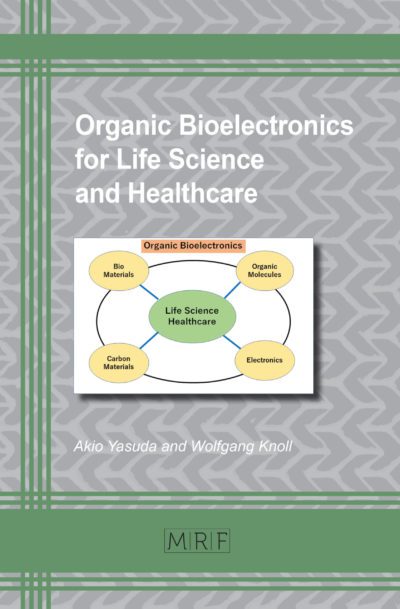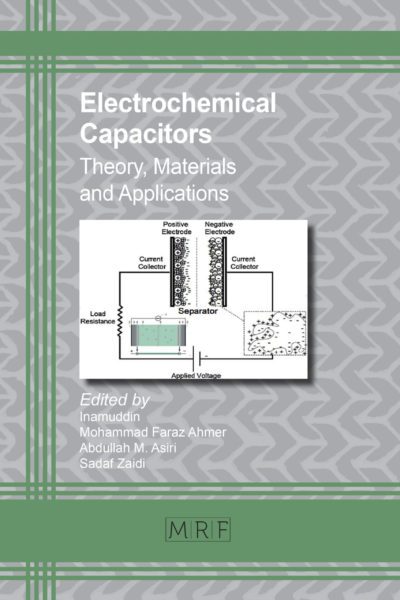Graphene-manganese dioxide based aptasensor for highly sensitive detection of Ochratoxin A
NABIHAH Mohammad Illias, VEERADASAN Perumal, MOHAMED SHUAIB Mohamed Saheed
Abstract. Biosensors have recently emerged as a simpler and cheaper alternative to traditional methods like HPLC for detecting ochratoxin A (OTA). This study aims to design a highly sensitive and selective aptasensor using graphene oxide (GO) and manganese dioxide nanoparticles (MnO₂NPs). The aptasensor, made with screen-printed carbon electrode (SPCE), was fabricated using hydrothermally synthesized MnO₂NPs at concentrations of 0.2M, 0.3M, and 0.4M. electrochemical impedance spectroscopy (EIS) assessed the biosensor’s sensitivity, specificity, and selectivity, revealing a detection limit of 3.33 ng/mL for OTA. The aptasensor showed high selectivity for OTA even in the presence of other mycotoxins like aflatoxin B1 (AFB1), deoxynivalenol (DON), and zearalenone (ZEA) and effective detected OTA in spiked cocoa and oats. The fabrication of GO-MnO₂NPs helps in enhancing the aptasensor’s stability and performance due to their high surface area, biocompatibility, and excellent electrical conductivity. This study establishes the foundation for creating a functional, economical, and efficient biosensing system to detect OTA in food. The extensive implementation of such technology can significantly help improve food safety and safeguard consumer interests.
Keywords
Ochratoxin A, Biosensor, Graphene, Manganese Dioxide Nanoparticles, Aptasensor
Published online 4/25/2025, 11 pages
Copyright © 2025 by the author(s)
Published under license by Materials Research Forum LLC., Millersville PA, USA
Citation: NABIHAH Mohammad Illias, VEERADASAN Perumal, MOHAMED SHUAIB Mohamed Saheed, Graphene-manganese dioxide based aptasensor for highly sensitive detection of Ochratoxin A, Materials Research Proceedings, Vol. 53, pp 626-636, 2025
DOI: https://doi.org/10.21741/9781644903575-63
The article was published as article 63 of the book Decarbonization Technology
![]() Content from this work may be used under the terms of the Creative Commons Attribution 3.0 license. Any further distribution of this work must maintain attribution to the author(s) and the title of the work, journal citation and DOI.
Content from this work may be used under the terms of the Creative Commons Attribution 3.0 license. Any further distribution of this work must maintain attribution to the author(s) and the title of the work, journal citation and DOI.
References
[1] M. Bryła et al., “Toxico-pathological effects of ochratoxin A and its diastereoisomer under in ovo conditions and in vitro evaluation of the toxicity of these toxins against the embryo Gallus gallus fibroblast cell line,” Poult. Sci., vol. 102, no. 2, pp. 1–11, 2023. https://doi.org/10.1016/j.psj.2022.102413
[2] W. C. Liu et al., “Ochratoxin A as an alarming health threat for livestock and human: A review on molecular interactions, mechanism of toxicity, detection, detoxification, and dietary prophylaxis,” Toxicon, vol. 213, no. April, pp. 59–75, 2022. https://doi.org/10.1016/j.toxicon.2022.04.012
[3] V. Vukojevi et al., “Enzymatic glucose biosensor based on manganese dioxide nanoparticles decorated on graphene nanoribbons,” J. Electroanal. Chem., vol. 823, pp. 610–616, 2018. https://doi.org/10.1016/j.jelechem.2018.07.013
[4] H. Wang et al., “A fluorescence and surface-enhanced Raman scattering dual-mode aptasensor for rapid and sensitive detection of ochratoxin A,” Biosens. Bioelectron., vol. 207, no. March, p. 114164, 2022. https://doi.org/10.1016/j.bios.2022.114164
[5] D. A. Oliveira, J. L. Lutkenhaus, and J. R. Siqueira, “Building up nanostructured layer-by-layer films combining reduced graphene oxide-manganese dioxide nanocomposite in supercapacitor electrodes,” Thin Solid Films, vol. 718, no. December 2020, 2021. https://doi.org/10.1016/j.tsf.2020.138483
[6] R. K. Mishra, A. Hayat, G. Catanante, C. Ocaña, and J.-L. Marty, “A label free aptasensor for Ochratoxin A detection in cocoa beans: An application to chocolate industries,” Anal. Chim. Acta, vol. 889, pp. 106–112, 2015. https://doi.org/10.1016/j.aca.2015.06.052
[7] K. Vijayalakshmi, A. Renitta, K. Alagusundaram, and A. Monamary, “Novel two-step process for the fabrication of MnO2 nanostructures on tantalum for enhanced electrochemical H2O2 detection,” Mater. Chem. Phys., vol. 214, pp. 431–439, 2018. https://doi.org/10.1016/j.matchemphys.2018.04.108
[8] S. Centane and T. Nyokong, “Aptamer versus antibody as probes for the impedimetric biosensor for human epidermal growth factor receptor,” J. Inorg. Biochem., vol. 230, p. 111764, 2022. https://doi.org/10.1016/j.jinorgbio.2022.111764
[9] Y. Wang et al., “Ascorbic acid-mediated in situ growth of gold nanostars for photothermal immunoassay of ochratoxin A,” Food Chem., vol. 419, 2023. https://doi.org/10.1016/j.foodchem.2023.136049
[10] N. M. Illias, V. Perumal, and M. S. Mohamed, “Highly Crystalline Manganese Dioxide Nanoparticles via One-Pot- Hydrothermal Technique with Graphene Oxide Paste,” Proc. Int. Conf. Glob. Optim. Its Appl. 2022 (ICoGOIA 2022), pp. 57–65, 2022, [Online]. Available: https://apc01.safelinks.protection.outlook.com/?url=https%3A%2F%2Ficogoia.utem.edu.my%2Fproceedings.html&data=05%7C01%7Cnabihah_18003516%40utp.edu.my%7C8b1f798250b042cc2fa308dbf52be0fb%7C84187be3037e41ec889ca150fe476432%7C0%7C0%7C638373341587651387%7CUnkn
[11] R. Al-Gaashani, A. Najjar, Y. Zakaria, S. Mansour, and M. A. Atieh, “XPS and structural studies of high quality graphene oxide and reduced graphene oxide prepared by different chemical oxidation methods,” Ceram. Int., vol. 45, no. 11, pp. 14439–14448, 2019. https://doi.org/10.1016/j.ceramint.2019.04.165
[12] M. Dinesh, C. Revathi, Y. Haldorai, and R. T. Rajendra Kumar, “Birnessite MnO2 decorated MWCNTs composite as a nonenzymatic hydrogen peroxide sensor,” Chem. Phys. Lett., vol. 731, no. May, p. 136612, 2019. https://doi.org/10.1016/j.cplett.2019.136612
[13] L. V. F. Oliveira, S. Bennici, L. Josien, L. Limousy, M. A. Bizeto, and F. F. Camilo, “Free-standing cellulose film containing manganese dioxide nanoparticles and its use in discoloration of indigo carmine dye,” Carbohydr. Polym., vol. 230, no. August 2019, p. 115621, 2020. https://doi.org/10.1016/j.carbpol.2019.115621
[14] Y. Qiu et al., “Immobilization of manganese dioxide nanoparticles on modified poly 2,4-dichlorostyrene microspheres: A highly efficient and recyclable catalyst for borrowing hydrogen reactions,” Org. Chem. Front., vol. 6, no. 19, pp. 3420–3427, 2019. https://doi.org/10.1039/c9qo00892f
[15] T. Pimklang, A. Watthanaphanit, and P. Pakawatpanurut, “Novel green synthesis of graphene oxide-manganese dioxide using solution plasma process for energy storage,” Chem. Eng. J., vol. 442, no. P2, p. 136244, 2022. https://doi.org/10.1016/j.cej.2022.136244
[16] Z. Ni, X. Liang, L. Zhao, H. Zhao, B. Ge, and W. Li, “Tin doping manganese dioxide cathode materials with the improved stability for aqueous zinc-ion batteries,” Mater. Chem. Phys., vol. 287, no. May, p. 126238, 2022. https://doi.org/10.1016/j.matchemphys.2022.126238
[17] P. K. Kalambate et al., “Progress, challenges, and opportunities of two-dimensional layered materials based electrochemical sensors and biosensors,” Mater. Today Chem., vol. 26, p. 101235, 2022. https://doi.org/10.1016/j.mtchem.2022.101235
[18] T. A. Burinaru et al., “Electrochemical impedance spectroscopy based microfluidic biosensor for the detection of circulating tumor cells,” Mater. Today Commun., vol. 32, no. June, 2022. https://doi.org/10.1016/j.mtcomm.2022.104016
[19] Y. Hou et al., “Development of a Nafion-MWCNTs and in-situ generated Au nanopopcorns dual-amplification electrochemical aptasensor for ultrasensitive detection of OTA,” Food Chem., vol. 403, no. May 2022, p. 134375, 2023. https://doi.org/10.1016/j.foodchem.2022.134375
[20] I. Beukes, G. J. Marais, and K. Jacobs, “The occurrence of mycotoxigenic fungi in abalone feed in South Africa,” vol. 2338, 2018. https://doi.org/10.2989/1814232X.2018.1534699
[21] P. Kumar et al., “Ochratoxins in food and feed: Occurrence and its impact on human health and management strategies,” Toxicon, vol. 187, no. July, pp. 151–162, 2020. https://doi.org/10.1016/j.toxicon.2020.08.031














